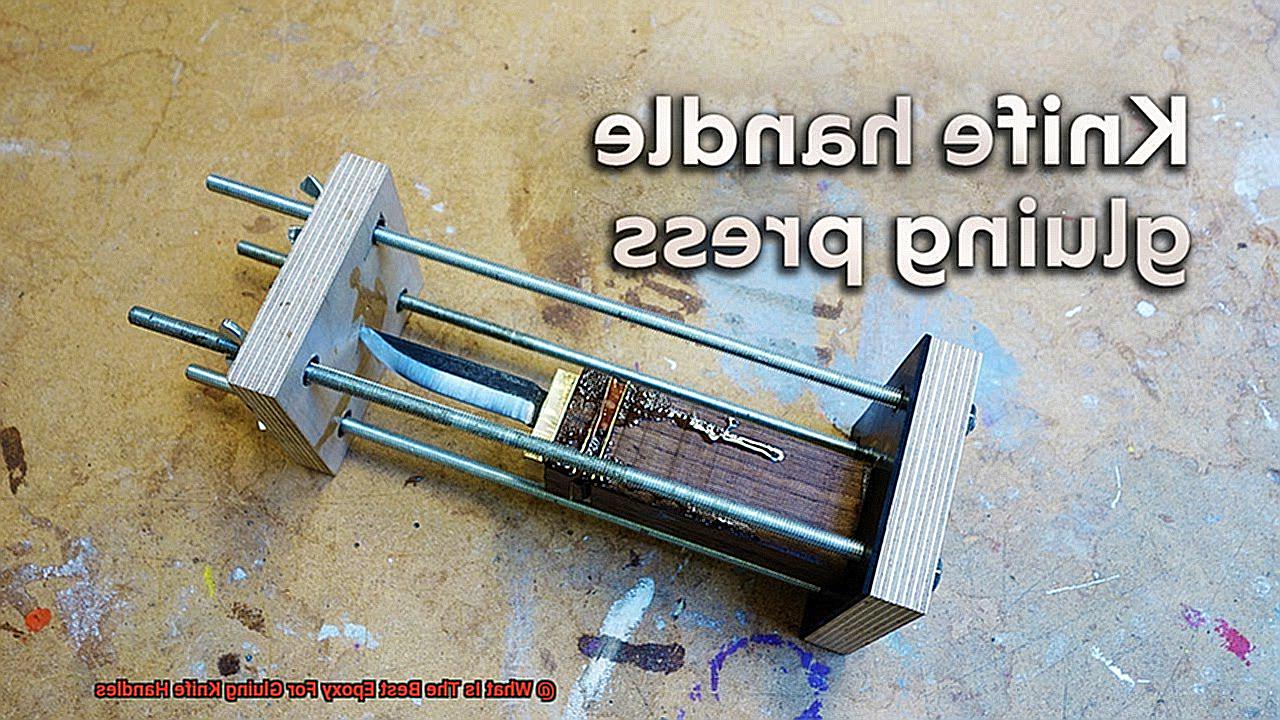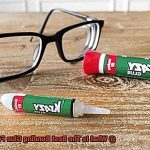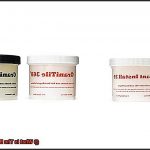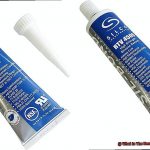Attention, knife enthusiasts and repair warriors.
Whether you’re a blade aficionado or just trying to save your trusty tool, finding the perfect epoxy for gluing knife handles is essential. But with so many options out there, how do you know which one will give you that rock-solid bond?
In this blog post, we’ll be your guide through the world of knife handle adhesives.
So, grab your favorite cutting companion and let’s embark on this epic glue-up adventure.
Types of Knife Handle Materials
Contents
The handle material of a knife plays a significant role in its overall performance and durability. With a wide range of options available, it’s important to understand the advantages and characteristics of each material.
Let’s dive into the details of wood, synthetic materials (Micarta and G10), metal, natural materials, and hybrid handle materials.
Wood Handles:
Wood is a classic choice for knife handles due to its timeless appeal and natural beauty. Handles made from different types of wood, such as rosewood, walnut, and ebony, offer unique grain patterns and colors.
Wood handles provide a comfortable grip and can be easily shaped and polished. They are also relatively lightweight compared to other materials. However, wood handles require regular maintenance to prevent drying out or warping.
Synthetic Materials (Micarta and G10):
Synthetic materials like Micarta and G10 are known for their exceptional strength and durability. Micarta is made by layering fabric (such as linen, canvas, or paper) with epoxy resin, resulting in a dense and resilient material.
G10 is a fiberglass laminate consisting of layers of fiberglass fabric impregnated with epoxy resin. Both materials are resistant to moisture, chemicals, and temperature changes. They offer excellent grip even in wet conditions and are available in various colors.
Metal Handles:
Metal handles, such as stainless steel or titanium, are known for their strength and longevity. They can withstand heavy use and are highly resistant to corrosion. Metal handles offer a sleek and modern appearance but may not provide the same level of grip as other materials. They are commonly found on folding knives or tactical blades.
Natural Materials:

Natural materials like bone, horn, or antler offer a unique and rustic appeal to knife handles. These materials are durable and provide a distinct aesthetic that cannot be replicated by synthetic or composite materials. However, natural materials require more maintenance compared to other handle materials. They may need periodic oiling or conditioning to prevent drying and cracking.
Hybrid Handle Materials:
Hybrid handle materials combine different elements to create a unique and functional handle. For example, some knives feature handles with a combination of wood and synthetic materials or wood and metal. These hybrid handles offer the benefits of both materials, such as the strength of synthetic materials and the natural beauty of wood.
Conclusion:
The choice of knife handle material depends on personal preference, intended use, and desired aesthetics. Wood handles provide a classic and natural appeal, while synthetic materials like Micarta and G10 offer exceptional strength and resistance to various conditions. Metal handles provide durability and a modern appearance, while natural materials offer a unique and rustic charm. Hybrid handle materials combine the benefits of different materials.
What to Consider When Choosing an Epoxy for Wooden Handles
When it comes to choosing the right epoxy for wooden handles, there are several crucial factors to consider. The strength and durability of the bond, curing time, temperature resistance, ease of application, flexibility, and compatibility with wood all play a significant role in selecting the best epoxy.
By understanding and evaluating these considerations, you can confidently choose the epoxy that will provide a secure and long-lasting bond for your wooden handles.
Strength and Durability:
To ensure a strong and durable bond between the handle and blade, it’s essential to select an epoxy with high tensile strength and excellent adhesion properties. Look for epoxies specifically designed for bonding wood, as they are formulated to provide optimal results and keep the handle securely attached even under heavy use and pressure.
Curing Time:
Consider your project timeline when selecting an epoxy. Some epoxies have quick curing times, allowing you to continue working sooner, while others may require more time to fully set. Choose an epoxy that aligns with your needs and allows sufficient time for proper alignment and adjustments.
Temperature Resistance:
Knives can be exposed to extreme temperatures during use, so it’s crucial to choose an epoxy that can withstand these fluctuations without compromising its bond strength. Look for epoxies with good temperature resistance properties to ensure the longevity of your wooden handles.
Ease of Application:
The ease of application can greatly impact your overall experience when working with epoxy. Consider whether you prefer a two-part epoxy that requires mixing or a single-part epoxy that can be applied straight from the container.
Additionally, be aware of the working time before the epoxy starts to harden, especially if you need more time for precise alignment or adjustments.
Flexibility:
Wooden handles may experience bending or flexing during use, especially in rugged environments. To prevent cracking or breaking under stress, choose an epoxy with some flexibility while maintaining overall strength. Look for epoxies labeled as “flexible” or “high flex” for this purpose.
Compatibility with Wood:
Not all epoxies are suitable for bonding with wood. Ensure that the epoxy you choose is specifically designed for wooden surfaces. These epoxies typically have special additives that promote adhesion to wood fibers, ensuring a strong and reliable bond.
What to Consider When Choosing an Epoxy for Synthetic Handles
When it comes to selecting an epoxy for gluing synthetic handles onto knives, there are several crucial factors to consider. The right epoxy will provide a strong and durable bond, ensuring that your knife handle stays securely attached during use. Let’s explore these considerations in more detail.
Material Compatibility:
Different knife handles are made from various synthetic materials like G-10, Micarta, or FRN. It’s crucial to choose an epoxy that is compatible with the specific material you’re working with.
This ensures proper adhesion and prevents the handle from coming loose over time. A weak bond can compromise the functionality of your knife and pose safety risks.
Strength and Durability:
To ensure a long-lasting bond, opt for an epoxy with high tensile strength and shear strength. This means it can withstand pulling, twisting, and sliding forces without weakening or detaching. Look for an epoxy that is resistant to moisture, chemicals, and temperature changes to ensure durability in various conditions. A strong and durable bond will enhance the performance and overall lifespan of your knife.
Cure Time:
Consider the time you need for proper alignment and clamping before the epoxy sets. Choose an epoxy with a cure time that allows for adjustments, especially if you’re new to handle installation. Longer cure times often result in stronger bonds but require more patience during the assembly process. It’s important to strike a balance between curing time and achieving a secure bond.
Ease of Use:
Look for an epoxy with a clear mixing ratio and easy application process. Some epoxies come with convenient dispensers or syringes for accurate measurement and precise application.
Consider the consistency and viscosity of the epoxy to ensure even spreading without excess or insufficient coverage. An easy-to-use epoxy will make the handle installation process smoother and more efficient.
Heat and Moisture Resistance:
Knives are frequently exposed to extreme temperatures and moisture. Select an epoxy that can withstand these conditions without weakening or losing its bond strength. Avoid epoxies that become brittle at low temperatures as they may compromise the handle’s integrity. A heat and moisture-resistant epoxy will ensure the longevity of your handle, even in demanding environments.
Heat and Moisture Resistance
Well, fret no more, because I’m about to offer you some blazing hot insights on how to choose the perfect epoxy adhesive for gluing knife handles. One of the most critical factors to consider in this endeavor is heat and moisture resistance. Allow me to delve deeper into this topic and unveil the secrets to a long-lasting bond.
Heat Resistance:
When it comes to gluing knife handles, you need an epoxy that can handle the heat. Picture this: knives exposed to high temperatures during cutting tasks and often soaking in scalding water for cleaning. To ensure a successful bond, you need an epoxy that won’t melt or lose its grip when things get steamy.
Moisture Resistance:
Water, water everywhere. Knife handles face constant exposure to moisture, from cleaning routines to wet kitchen environments. To guarantee a bond that will stand the test of time, opt for an epoxy that can repel water and maintain its strength even when things get damp.
Direct your attention towards epoxies explicitly designed for wet environments. These epoxies boast water-repelling additives that create an unyielding bond even in the face of relentless moisture.
Follow the Manufacturer’s Instructions:
While numerous epoxy adhesives offer commendable heat and moisture resistance, it is essential to follow the manufacturer’s instructions for optimal performance. Some epoxies may necessitate additional steps such as surface preparation or curing processes to achieve the best results.
Conclusion:
And there you have it, fellow enthusiasts – the heat and moisture resistance of your epoxy adhesive can make all the difference when gluing knife handles. By selecting an epoxy that can withstand high temperatures and repel moisture, you’ll ensure a robust and enduring bond that can conquer any culinary challenge. Remember to adhere to the manufacturer’s instructions for application and usage, and you’ll be wielding your knives with confidence in no time.
Pre-Mixed vs Mixing Required
Epoxy adhesives are the go-to choice for gluing knife handles, thanks to their unmatched strength and durability. However, when it comes to epoxy, there are two contenders in the ring: pre-mixed and mixing required. So, let’s dive into the differences between these two options and help you make an informed decision for your next project.
Let’s start with pre-mixed epoxy. It’s like your favorite takeout meal – ready to use right out of the container. The resin and hardener are perfectly combined in the correct ratio, saving you the hassle of measuring and mixing. Convenience is key here, allowing you to skip the prep work and get straight to gluing your knife handle.
On the other hand, mixing required epoxy puts you in control. You become the master chef as you mix the resin and hardener yourself. This customization allows you to adjust the ratio based on your specific project needs. Want a quicker cure time? No problem. Adjust the ratio accordingly. It’s like creating your own culinary masterpiece.
Now, let’s weigh the pros and cons of each option. Pre-mixed epoxy is perfect for beginners or those who aren’t comfortable with epoxy mixing. It’s foolproof – just open the container and get to work. On the flip side, mixing required epoxy requires a bit more attention to detail. You need to ensure that you achieve the correct ratio for a strong bond.
Both types of epoxy can provide a strong bond when applied correctly. However, it’s important to follow the manufacturer’s instructions to avoid weak bonds or incomplete curing.
When it comes to brand options, pre-mixed epoxy favorites include JB Weld, Loctite, and Gorilla Glue. If you’re into mixing required epoxy, brands like West System Epoxy, System Three, and TotalBoat have got you covered.
Ultimately, the choice between pre-mixed and mixing required epoxy boils down to personal preference, experience level, and project requirements. So, whether you want the convenience of pre-mixed or the customization of mixing required, choose an epoxy that will stand up to the challenges of gluing knife handles.
Reputable Brands of High-Quality Epoxies
When it comes to gluing knife handles, using a high-quality epoxy is essential to ensure an unbreakable and long-lasting bond. Reputable brands of epoxies have gained recognition for their superior quality, reliability, and outstanding performance. In this article, we will explore the advantages of using reputable brands of epoxies for knife handle gluing and discuss some of the top brands in the market.
Advantages of Using Reputable Brands of Epoxies:
Unmatched Strength and Durability:
Reputable brands of epoxies are known for their exceptional bonding strength, guaranteeing that the knife handle remains securely attached even under the most demanding conditions. These epoxies provide a reliable and long-lasting bond, preventing the handle from loosening or breaking over time.
Impact Resistance and Load-Bearing Capability:
High-quality epoxies are specifically formulated to withstand heavy loads and resist impacts, making them ideal for knife handles that may endure rough handling or heavy use. These epoxies absorb shocks and vibrations, ensuring that the handle remains intact and undamaged.
Heat Endurance:
Certain reputable epoxy brands offer products with excellent heat resistance, which is particularly critical when working with knives that may be exposed to high temperatures during use or cleaning. These epoxies can withstand extreme heat without compromising their bonding strength, ensuring that the handle remains securely attached even in the harshest conditions.
Customized Formulations:
Reputable brands often provide different formulations to cater to specific bonding requirements. They may offer quick-setting epoxies for fast results or longer curing time options for intricate handle designs. These specialized formulations allow users to choose the epoxy that best suits their project needs, ensuring optimal results.
Versatility:
Reputable epoxy brands are highly versatile and can be used for a wide range of applications beyond knife handle bonding. This versatility makes them a valuable investment for DIY enthusiasts and professionals alike, as they can be utilized for various household repairs or other projects, providing durable and reliable results.
Top Reputable Brands of Epoxies:
- Devcon: Known for its unwavering strength, durability, and impact resistance, Devcon offers a wide range of epoxy adhesives suitable for knife handle bonding.
- Loctite: Loctite epoxies provide exceptional bonding strength, long-term durability, and resistance to water, chemicals, and extreme temperatures, ensuring a reliable bond that lasts.
- J-B Weld: Renowned for its reliability and long-lasting bonding solutions, J-B Weld offers exceptional strength and versatility that guarantees an unbreakable bond.
- PC Products: PC Products specializes in high-quality epoxy adhesives known for their exceptional bonding strength, impact resistance, and gap-filling ability, ensuring flawless results every time.
Reading Product Reviews
In this blog post, we will explore the profound benefits of reading product reviews when selecting the best epoxy for this specific task. By delving into the experiences of other users, you can ensure a strong and durable bond for your knife handles by making an informed decision.
Firsthand Experiences: The Voice of the Users
Product reviews provide a treasure trove of insights from individuals who have already used various epoxy products for gluing knife handles. These firsthand experiences allow you to understand the pros and cons of each product, empowering you to make a well-informed decision by weighing your options effectively.
Addressing Key Concerns: Tackling the Crucial Questions
When perusing product reviews, it is crucial to seek out specific information that addresses key concerns related to gluing knife handles. Strength, durability, compatibility with different materials, and ease of application are essential factors to consider. By paying attention to these details in reviews, you can find an epoxy that meets your specific requirements and ensures a bond that stands the test of time.
Not all epoxies are created equal, and it is vital to identify any limitations or common issues mentioned in the reviews. This allows you to steer clear of potential challenges and select an epoxy that aligns perfectly with your needs. Pay particular attention to drying time and odor if convenience and user-friendliness are high on your priority list.
Comparison Reviews: The Art of Decision-Making
Individual product reviews are invaluable, but comparison reviews take it up a notch. These insightful analyses evaluate multiple epoxy products side by side, providing a comprehensive understanding of their strengths and weaknesses. By exploring these comparisons, you can streamline your choices and confidently select the best epoxy for gluing knife handles.
G3gXGas0ihI” >
Conclusion
In conclusion, when it comes to gluing knife handles, the best epoxy to use is one that provides a strong and durable bond.
It should be able to withstand the rigors of everyday use, ensuring that the handle remains securely attached to the blade. While there are many epoxy options available on the market, it is important to choose one specifically designed for knife handle applications.
Additionally, consider factors such as curing time and ease of application.






